
Paul Sterry has an academic background in freshwater biology and is a passionate conservationist. He has been writing about natural history and photographing wildlife for the last 40 years, with an emphasis on the British scene.
The last time I saw a Ghost Orchid Epipogium aphyllum in Britain was in 1986, at a site in the Home Counties. I think this was the final time the species was seen ‘officially’ in the 20th Century and it was deemed to be extinct until the discovery of a specimen a decade or so ago in the West Midlands, at a location where the species had occurred historically. Like many others of my generation, in the years preceding 1986 I had walked shady woodlands in the Chilterns and seen (or more truthfully been shown) half-a-dozen or so specimens. And like many others I continued to search, off and on, in the years that followed, to no avail.
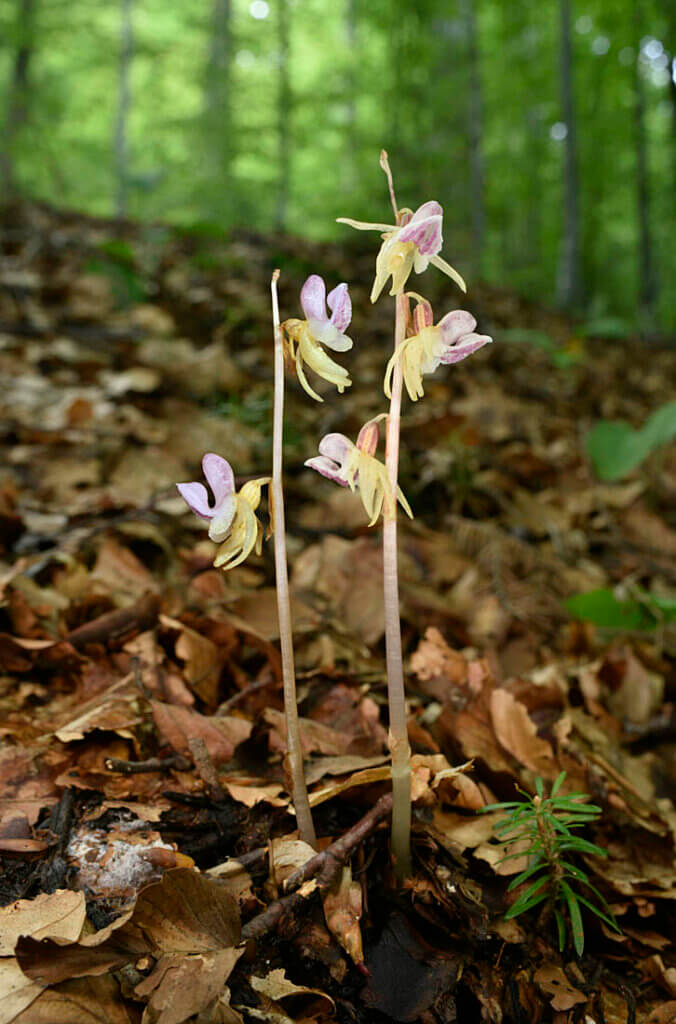
This year, thanks to the generosity of Mihai Bobocea I received an invitation to accompany Andrew Cleave on a Ghost-hunting trip to Romania. Once in a while you meet a truly inspiring person and Mihai is just such an individual. He has a zest for life and a fitness level to match, counting mountaineering and caving amongst his pastimes. He is also passionate about orchids, dedicated to the study of speciation amongst the genus Epipactis in Europe, and devoted to Ghost Orchids. I can’t imagine there are many living botanists who have discovered as many Epipogium plants as Mihai.
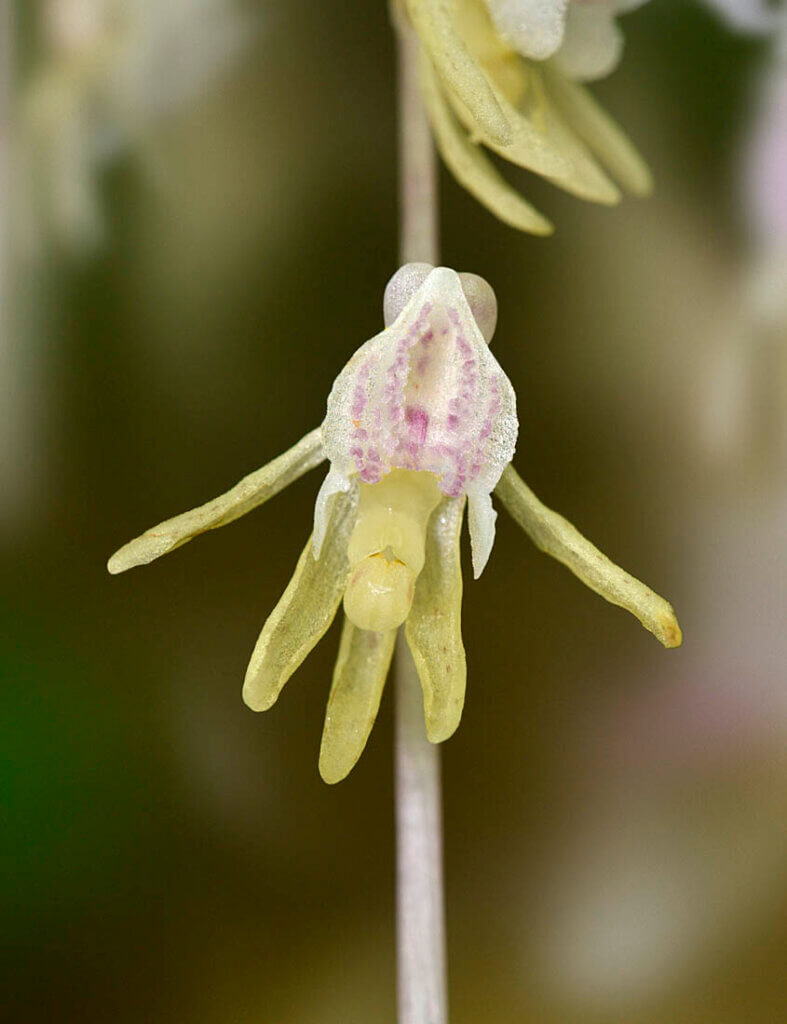
As well as being an avid botanist Mihai is passionate about his Romanian forests, their vulnerability to commercial logging and habitat destruction, and the impact that individuals can have on the ground flora. Consequently we explored the forests and found Ghost Orchids by following weathered tracks and gullies, thereby minimising our impact on the woodland floor. Good job too because we found plenty of plants. Given the limited duration of flowering (plants often last just a few days before withering) and the extended flowering period (anywhere from June to October) it is safe to assume that what we saw was just the tip of the iceberg. It is also reasonable to assume that non-flowering subterranean Ghost Orchids could have been pretty much anywhere in suitable habitat. Indeed, the evidence of my own eyes lends support to this contention. Before photographing plants I always took care to do a ground-level inspection of the surrounding leaf-litter: on several occasions I spotted infant flowering shoots otherwise hidden from view by fallen leaves. Viewed from above, I would have missed them completely.
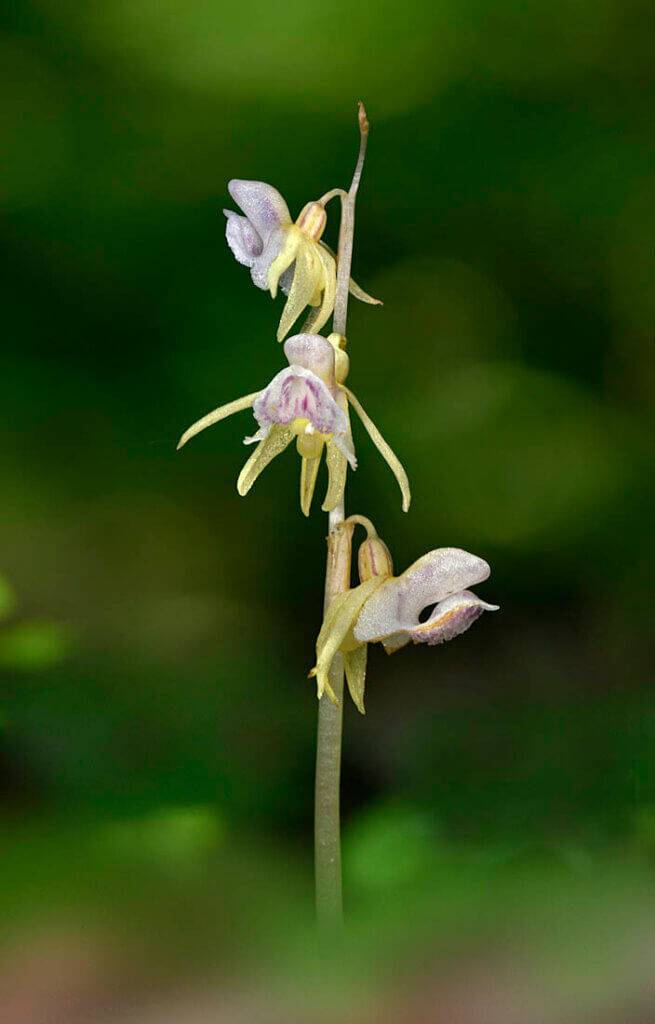
The Ghost Orchid is an intriguing and peculiar plant. It lacks chlorophyll and gains nutrition instead by feeding on a fungus – the scientific term is mycotrophic. To describe the Beechwoods in which we found Ghost Orchids in Romania as ‘undisturbed’ would be an understatement: in many locations we didn’t see another person all day and I imagine the inches-deep leaf litter had not be trodden upon by human feet for decades. Consequently this fragile, layered micro-habitat was intact and pristine, as delicate and vulnerable as any Sphagnum bog harbouring Bog Orchid Hammarbya paludosa. Presumably the leaf litter was also permeated by the mycelial threads of the fungus with which Epipogium is so intimately dependent; it is easy to imagine how much damage trampling would do to the integrity of the fungus – potentially just as harmful to Epipogium as treading on the plant itself. Consequently, I can understand Mihai’s insistence that we minimised our impact on the forest’s leaf-litter.
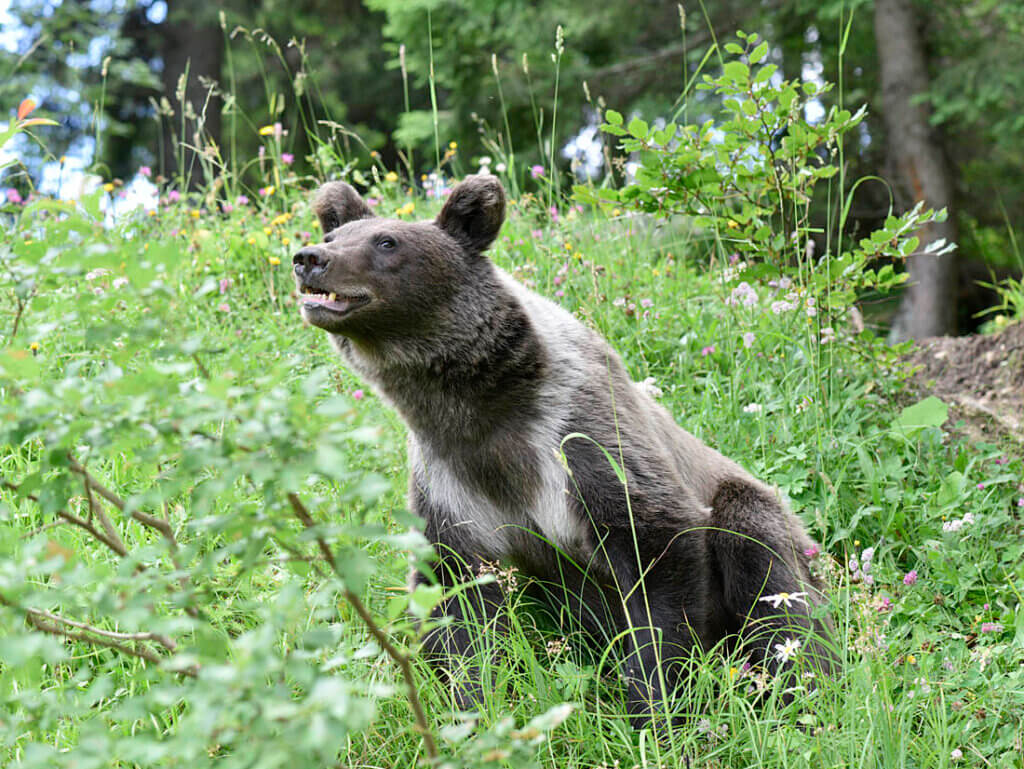
To paraphrase the lyrics of the Children’s song Teddy Bear’s Picnic ‘when we went down in the woods that day we sure had a big surprise’. On returning to our car after an afternoon’s orchid-hunting we encountered this wonderful Brown Bear right beside the road; the picture was taken with the same macro lens I used to photograph Epipogium. It was a sub-adult animal (judging by its markings) and by bear standards a relatively small individual according to Mihai. If that’s the case, I am not sure I would relish quite such a close encounter with its ‘Mommy and Daddy’.
Returning the subject of Ghost Orchids, back in the 1980s I would not have thought twice about spending a day traipsing through suitable Beechwood habitat in search of the elusive Epipogium. But 30 years on, my trip to Romania has resulted in a bit of enlightened soul-searching. A heightened appreciation of the fragile nature of the Ghost Orchid’s habitat – undisturbed leaf-litter – and the ease with which the plant can be overlooked and could be carelessly trampled means I probably won’t try again. The exception might be woodland that was in imminent danger of being destroyed – by HS2 for example. This reluctance is in recognition of the limitations of my spotting skills and a nagging feeling that I may have contributed to its local extinction by virtue of the seemingly innocent act of looking for it. And in the unlikely event that I came across one in Britain by chance then it would take an awful lot to induce me to tell another soul. That’s not me being selfish but rather acknowledging the reality of the situation: the unintended damage that the inevitable hordes of well-intentioned pilgrims would cause to this fragile environment.
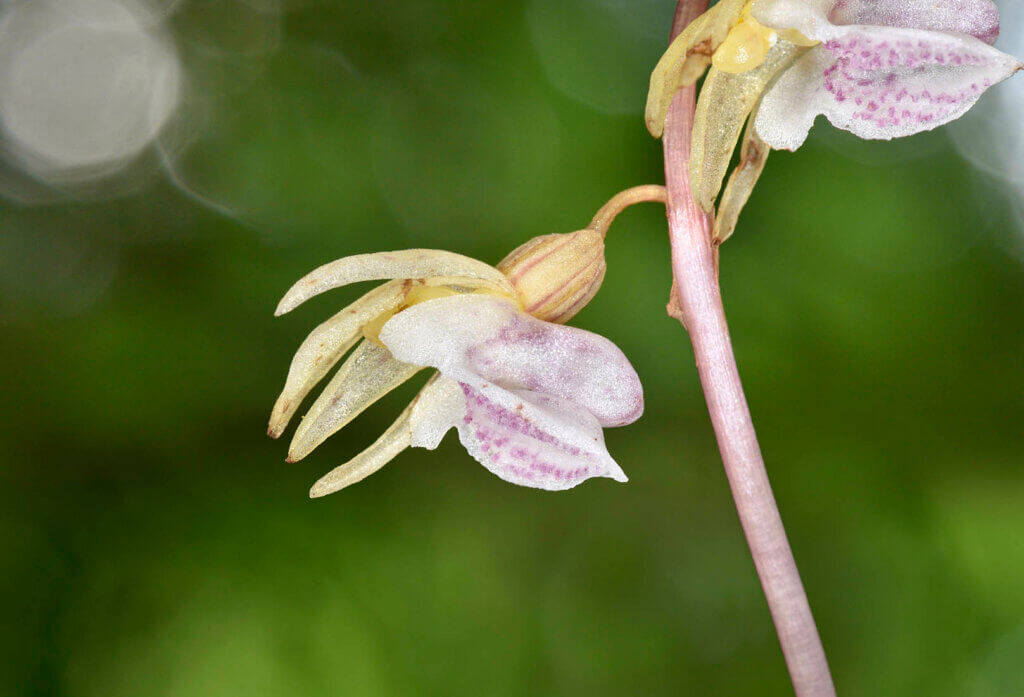
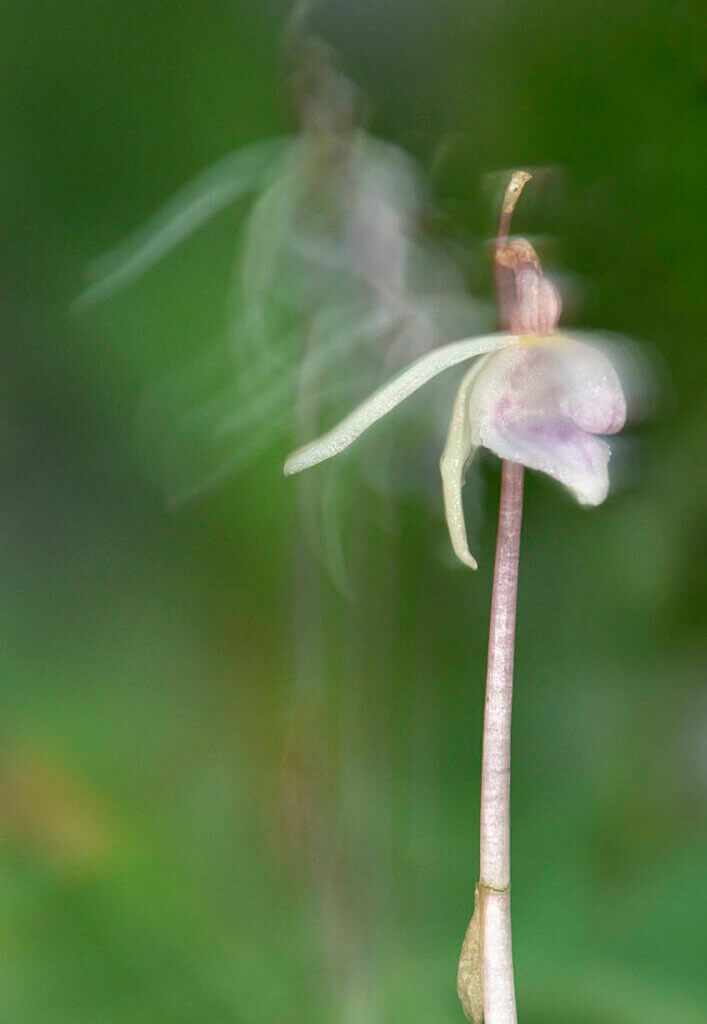
Thanks Paul for this very interesting blog. I hope you’ll follow it up with more detail about the woodlands where this orchid grows. Judging by one photo, the beeches look quite young and even aged. The inference is that this is not old growth forest.
Nice to see what appears to be a young yew seedling in the first photo. How are the yew woods in Romania?